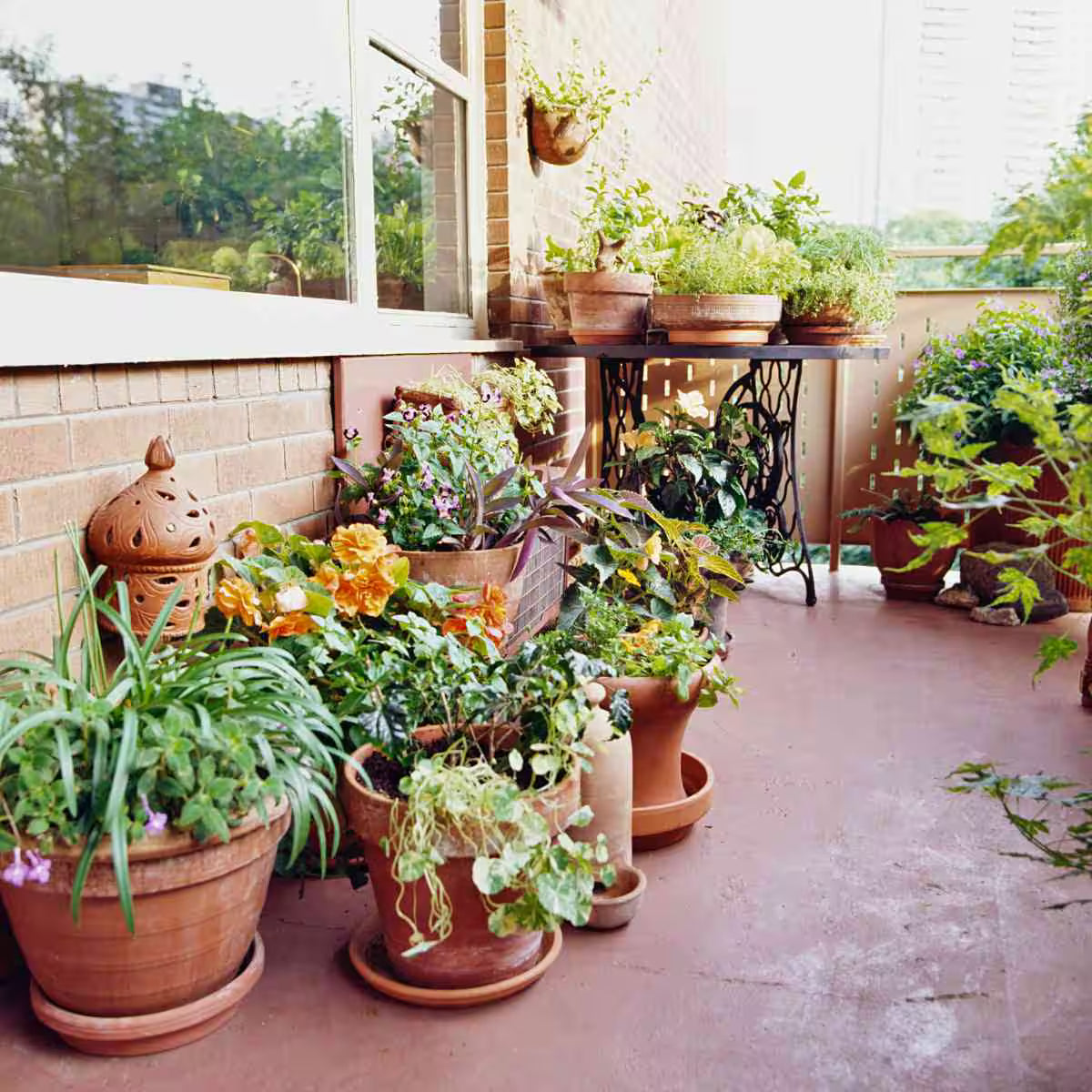
Flower Balconies & Pest Control
Flower balconies, often vibrant and compact garden spaces in urban or residential settings, can quickly become hotspots for common pests like aphids, whiteflies, thrips, and fungus gnats. Because these areas are close to living spaces and frequently visited by pollinators, traditional chemical sprays are often undesirable. Biological pest control offers a safe and effective alternative, using natural enemies such as predatory mites, beneficial nematodes, and predatory insects to target pests without harming plants, people, or beneficial insects. Many biocontrol products are easy to apply—such as preventative sachets—making them ideal for home gardeners. This approach not only keeps plants healthy and blooming but also supports a more sustainable and pollinator-friendly balcony ecosystem.
Monitoring & Mass Trapping
Monitoring and mass trapping are important tools for managing pests on flower balconies, but they must be used thoughtfully to protect beneficial insects. Horiver sticky cards and roller tape can be helpful for detecting early signs of pests like whiteflies or thrips, but they should only be used if the balcony is enclosed or netted. When placed in open, outdoor spaces, these sticky traps can unintentionally capture pollinators like bees and butterflies, as well as native beneficial insects that help keep pest populations in check. For open balconies, it's better to rely on regular visual inspections and use targeted pheromone traps for specific pests when needed. This approach allows for effective monitoring and population control while preserving the health and diversity of the surrounding insect community.
Jump-to:
Spider Mite Control Products
Spical Ulti-Mite
-
Preventative:
- One sachet per plant
-
Elimination:
- N/A
-
Repeat Applications:
- Bi-weekly or as needed
-
Notes:
- Feeds on all stages of spider mites, but does not do well in webbing. The sachets last 4-5 weeks on the plants.
Spidex Vital Plus
-
Preventative:
- One sachet per plant
-
Elimination:
- N/A
-
Repeat Applications:
- Bi-weekly or as needed
-
Notes:
- Feeds on all stages of spider mites.
Spidex Red
-
Preventative:
- N/A
-
Elimination:
- 100 - 150 predatory mites per square meter
-
Repeat Applications:
- Bi-weekly or as needed
-
Notes:
- Feeds on all stages of spider mites. Best used when you have hot spots with webbing. Best used with Diboxes to avoid getting carrier material on the floor
Spidex Boost
-
Preventative:
- N/A
-
Elimination:
- One sachet per plant
-
Repeat Applications:
- Bi-weekly or as needed
-
Notes:
- The larvae of this product feeds on all stages of spider mites. Best used when you have hot spots with webbing.
Thrips Control Products
Swirski Ulti-Mite
-
Preventative:
- One sachet per plant
-
Elimination:
- One sachet per plant combined with Thripor or Horiver
-
Repeat Applications:
- Every 4 - 5 weeks
-
Notes:
- Feeds on 1st instar thrips larvae. The sachets last 4-5 weeks once applied on the plants.
Chrysopa
-
Preventative:
- N/A
-
Elimination:
- 40 insects per metre sq.
-
Repeat Applications:
- Bi-weekly or as needed
-
Notes:
- Feeds on all stages of thrips, except eggs and pupae. Best used with diboxes for a cleaner distribution method.
Horiver Wetstick Cards
-
Preventative:
- One card per metre sq.
-
Elimination:
- Two cards per metre sq.
-
Repeat Applications:
- Replace cards when full
-
Notes:
- Only use when if the balcony is netted or closed in.
Blue or Yellow: common thrips species
Green: Echinothrips
- Only use when if the balcony is netted or closed in.
Entomite
-
Preventative:
- 1 tablespoon per pot
-
Elimination:
- N/A
-
Repeat Applications:
- Repeat every 6-8 weeks or when an influx of thrips is found on the plants
-
Notes:
- Only use with common thrips species, as this product only feeds on thrips pupae and the Echinothrips do not pupate in the soil.
To be used as a supplementary control in combination with Swirski Ulti-mite. Will not adequately control thrips as a stand alone product.
An Entomite 10,000 will treat 60 pots at one tablespoon per pot.
- Only use with common thrips species, as this product only feeds on thrips pupae and the Echinothrips do not pupate in the soil.
Fungus Gnat Control Products
Entomite
-
Preventative:
- 1 tablespoon per pot
-
Elimination:
- 2-3 tablespoons per pot
-
Repeat Applications:
-
Prevention: re-apply every time you pot up your plants or change out soil.
Elimination: Repeat every 6-8 weeks or when there is an influx of fungus gnats flying around the plants
-
Prevention: re-apply every time you pot up your plants or change out soil.
-
Notes:
- Feeds on fungus gnat eggs and larvae.
Yellow Horiver Wetstick Cards
-
Preventative:
- N/A
-
Elimination:
- Two cards per meters square
-
Repeat Applications:
- Replace cards when full
-
Notes:
- Only use when if the balcony is netted or closed in. Hang underneath the foliage near the soil line to capture flying adults.
Entonem
-
Preventative:
- N/A
-
Elimination:
- 500,000 nematodes per meter square
-
Repeat Applications:
- Re-apply weekly for 3-4 weeks
-
Notes:
- For fast results, use in conjunction with Entomite. Works on fungus gnat larvae.
Aphid Control Products
Scale/Mealybug Control Products
Whitefly Control Products
Swirski Ulti-Mite
-
Preventative:
- One sachet per plant
-
Elimination:
- 1 sachet per plant combined with yellow Horiver cards
-
Repeat Applications:
- Apply every 4-5 weeks
-
Notes:
- Feeds on eggs and larvae of whitefly. The sachets last 4-5 weeks on the plants.
Yellow Horiver Wetstick Cards
-
Preventative:
- One card per metre sq.
-
Elimination:
- Two cards per metre sq.
-
Repeat Applications:
- Replace cards when full
-
Notes:
- Hang 30 cm above crop
Caterpillar Control Products
Flower Balconies Solutions by Pest:











